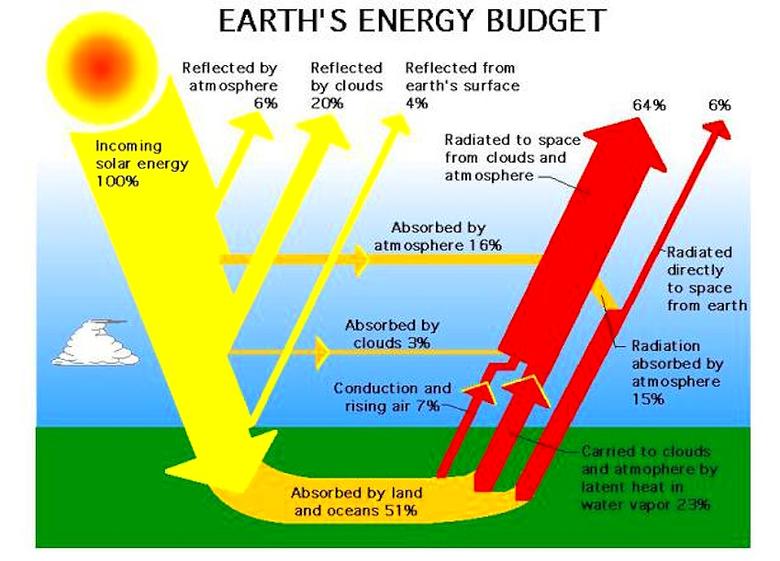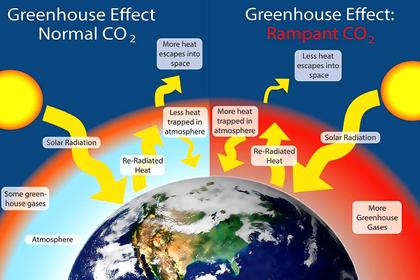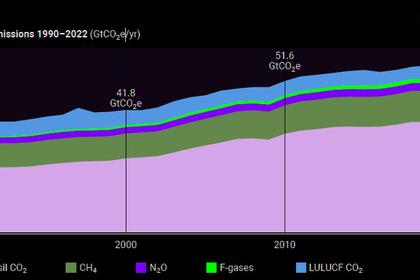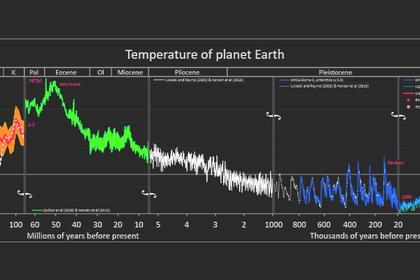
THERMODYNAMIC EQUILIBRIUM FOR CLIMATE

Understanding Josef Loschmidt's Gravito-Thermal Effect and thus Why the Radiative Forcing Greenhouse Hypothesis is False.
Douglas J Cotton 12 December, 2019
Josef Loschmidt was a brilliant 19th century physicist who was the first to make a realistic estimate of the size of air molecules: quite a feat in those days. In 1876, he understood how these molecules were affected by gravity as they moved between collisions and, because gravity affects their speed and thus the temperature of a region, Loschmidt was able to explain his "gravito-thermal" effect wherein gravity forms a non-zero temperature gradient in the lower region of the atmosphere that is called the troposphere. This fact is verified from the laws of physics and quantified. The quantification is found to be applicable in all planetary tropospheres now that we have data for such planets in modern times.
The temperature gradient is called the "lapse rate" by climatologists, but it has nothing to do with any "rising parcels or air" that are supposedly warmed by conduction at the surface interface. In fact, there is nothing to hold together any such "parcels" in calm conditions because molecules move at about 500 metres a second (1,800 Km/hour) between collisions and can easily leave the boundary of any imaginary parcel. Never-the-less, it is useful to imagine a very small ensemble of molecules just big enough to have a measurable temperature on a macro scale. We do this below to calculate the temperature gradient.
The important thing to remember is that the temperature gradient forms locally in the atmosphere and does so at the molecular level. There does not even have to be a surface.
So let us consider this scenario. If we could construct a 10m long horizontal perfectly insulated and sealed cylinder filled with argon (which gas we will say does no radiating) and we then rotate the cylinder about its central point to a vertical position, a temperature gradient will develop due to gravity for which we will say the acceleration is 9.8 m/sec².
We then calculate that temperature gradient by noting that, when it stabilizes, the Second Law of Thermodynamics* tells us that entropy will be at a maximum. For that to be the case, there must be no unbalanced energy potentials. Energy potentials can be created by any form of internal energy, including chemical energy, kinetic energy and potential energy in a force field such as gravity or centrifugal force. I mention the latter because a radial temperature gradient also forms in a vortex cooling tube due to centrifugal force.
So, entropy is essentially a measure of progress in the dissipation of unbalanced energy potentials and it reaches a maximum when all such potentials have dissipated fully.
We have that state of maximum entropy (called “thermodynamic equilibrium”) when the sum of mean molecular gravitational potential energy (GPE) + kinetic energy (KE) is the same at all heights in a local region of the troposphere. If that were not the case then there would be unbalanced energy potentials.
Note, however, when comparing regions at significantly different altitudes, there can be different sums (GPE + KE) and that can be due to weather conditions and/or the absorption and emission by radiating molecules.
Never-the-less, in calm conditions at night, the gradient tends to repair itself in any local region. Temperatures do not tend to level out because gravity redistributes thermal energy and may also modify the density in such as way that the region tends towards maximum entropy (thermodynamic equilibrium) with its associated temperature and density gradients.
The condition (GPE + KE) = constant is REQUIRED for thermodynamic equilibrium.
Then, from that condition (maximum entropy) we argue that, as a small mass m of argon moves down through a distance dH it will lose gravitational potential energy of m.g.dH where g is the acceleration due to gravity. The energy will be converted to kinetic energy and that energy will be the amount required to raise the temperature of that mass m by dT. Then, from the definition of specific heat (Cp) the energy is m.Cp.dT.
So m.Cp.dT = -m.g.dH
and hence the gradient …
dT/dH = – g/Cp
If the specific heat is exactly 1.000 (as is close for air) then the gradient is -9.8 K/Km.
Hence the temperature difference between the top and bottom of the cylinder of height 10m is 0.098 C degrees. As this is close enough to 0.1 degree we should be able to measure it.
In the real atmosphere there is a temperature-leveling effect due to radiation back and forth between identical “greenhouse” molecules (mostly water vapor) which are at different altitudes and this reduces the magnitude of the gravitationally-induced temperature gradient.
The overall state of thermodynamic equilibrium (maximum entropy) thus has a gradient that, mostly due to water vapor, is reduced in magnitude to about -6 to -7 K/Km.
So Josef Loschmidt is proven correct and we see evidence in the tropospheres of all planets with significant atmospheres. For example, the base of the 350Km high nominal troposphere of the planet Uranus is about 320K whereas the solar radiation can only maintain temperatures around 60K near the top of the Uranus atmosphere.
The question as to how the thermal energy gets down through 350Km to hotter regions was answered for the first time anywhere in my paper "Planetary Core and Surface Temperatures" published in 2013 and never correctly refuted.
I have calculated the theoretical temperature gradient (-g/Cp) for the Uranus troposphere and found that the actual value is about 95% of this theoretical value, which is not surprising seeing that there is relatively little radiation occurring.
Now, because gravity has already established the temperature gradient in the troposphere of every planet with a significant atmosphere, there is simply no need for any radiative forcing greenhouse phenomenon. Indeed, if that could be a reality, we would get about double the surface warming and we'd all cook. It was Josef Loschmidt's explanation in 1876 that was completely overlooked by climatologists, and that is where it all went so horribly wrong.
Footnote:
Some have attempted to refute Loschmidt's explanation but they do not correctly understand the Second Law of Thermodynamics.* See this "WUWT errors" page. You may also wish to read https://www.linkedin.com/pulse/cogent-irrefutable-reasons-why-carbon-dioxide-cannot-warm-cotton/
* Second Law of Thermodynamics: In a natural thermodynamic process, the sum of the entropies of the interacting thermodynamic systems increases.
Douglas Cotton, B.Sc.(physics), B.A. (econ), Dip.Bus.Admin.
(Independent self-funded researcher into atmospheric and sub-terrestrial physics)
-----
Earlier:
















